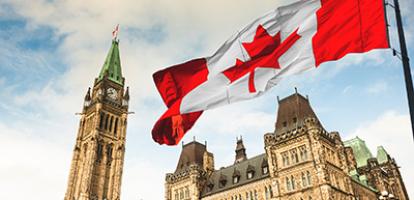The Bank of Canada once again held its policy rate at 5 per cent on Wednesday, as expected.
After two months of disappointment, with the annual change in the Consumer Price Index ticking up in July and August, inflation resumed its descent in September, falling to 3.8 per cent from 4 per cent. That, plus weak economic numbers, made it practically certain – confirmed by the expectations of financial markets – that the central bank would hold.
The real questions concern the bank’s end point for monetary policy in the medium term and what that means for Canadians.
The bank is probably at the end of its tightening cycle. But this doesn’t mean interest rates are coming back down to where they were before COVID-19 upended our lives.
The interest-rate hikes the bank began in early 2022 are bringing inflation back to target. Core measures of inflation also fell in September, consumption growth is flagging and the unemployment rate is rising.
And as inflation subsides, the bank’s policy rate rises in real terms, making monetary policy more restrictive even if the bank leaves its policy rate untouched. With the policy rate at 5 per cent and inflation at 3.8 per cent, the real policy rate, at 1.2 per cent, is already on the restrictive side. Moreover, the rate is above the bank’s estimate of its real “neutral” level – the rate when the economy is producing at its potential and inflation is sustainably at 2 per cent – which the bank thinks is currently between zero and 1 per cent.
So the Bank of Canada’s next move will likely be a cut. This raises a whole series of questions. How soon will the central bank move? How far will it move? What does the new normal look like? Are we headed back to where we were in the decade before the pandemic? Or will we land somewhere new, and what are the ramifications?
To address those questions, it is important to distinguish between the shorter-term neutral rate that fluctuates based on the state of the economy, and the longer-term neutral rate that is based on more structural factors. It is the latter that we are interested in here, as this rate has less to do with the cyclical nature of the economy and more to do with underlying fundamentals. A higher longer-term neutral rate implies higher interest rates in the economy, in general.
The 30 to 35 years that preceded the pandemic were marked by falling real interest rates alongside a decline in the neutral rate. Globalization was an important part of this story as China flooded world markets with cheap manufactured goods, keeping both inflation and interest rates low. As the Chinese labour force expanded with a massive migration from the countryside to coastal cities, young Chinese workers saved for retirement. World savings were high, keeping the neutral rate low.
Now, these demographic trends have largely reversed. The migration to the cities in China has run its course, and China’s extremely low birth rate means that its labour force is actually decreasing. The older members of the Chinese population are running down their savings, lowering the world saving rate, which also puts upward pressure on the neutral rate.
A similar demographic shift is happening in Canada, as the increased savings we saw as people moved closer to retirement reverses and these same folks leave the work force and spend their hard-earned money.
A higher neutral rate has many negative effects: increased borrowing costs for highly leveraged households, businesses and government.
This is where productivity comes in. We have now had many years of poor productivity growth in Canada, driving investment and interest rates down. Reasons abound, including policies that encourage a disproportionate amount of lending to mortgages, which does very little to increase productivity; competition for our talent from the United States; and needless interprovincial trade barriers, to name but a few.
We badly need to reverse at least some of these trends and generate more investment opportunities.
That will further increase the neutral rate, to be sure. But this reversal and increased productivity will also offset the negative effects of a higher neutral rate.
We should all be preparing for a world with higher interest rates. Best to start now.
Jeremy Kronick is associate vice-president, and director of the Centre on Financial and Monetary Policy at the C.D. Howe Institute, where Steve Ambler, a professor of economics, University of Quebec at Montreal, is the David Dodge Chair in Monetary Policy.
Op-Ed from the Globe and Mail





